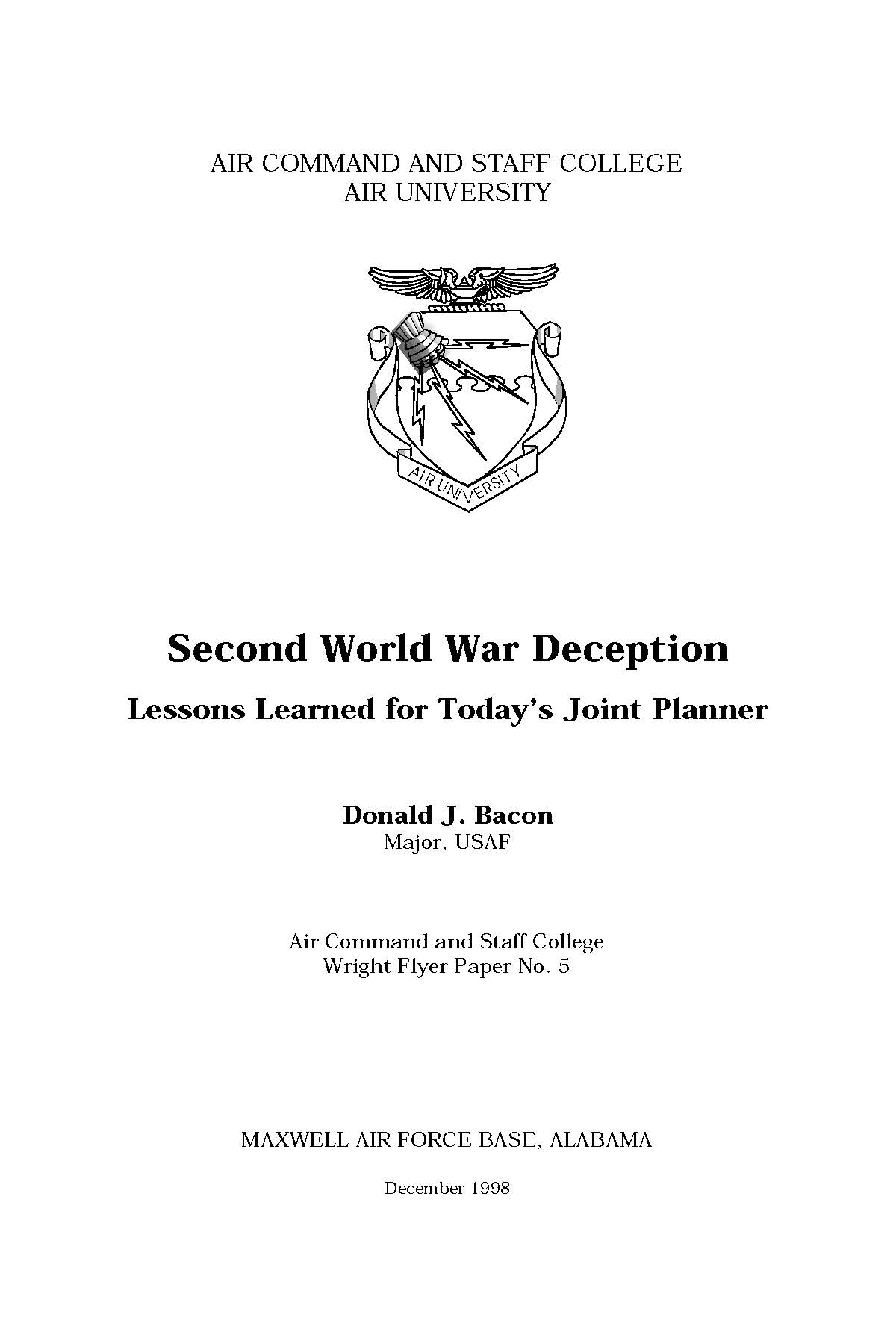 Second World War history offers the military strategist a cornucopia of lessons learned on how to apply the art of military deception. This paper analyzed six Allied deception operations to identify the fundamental reasons why Allied deception efforts were the most successful in history. The six deception operations reviewed were Barclay, Cockade, and Bodyguard as well as the Soviet deception operations at Stalingrad, Kursk, and White Russia. A critical analysis of these six operations identified seven major factors that made Allied deception efforts extremely effective. These seven factors were that the Allies controlled all key channels of information, had great intelligence “feedback” on their deception operations, had high-level and centralized control over deception planning, practiced sound deception techniques, subordinated deception to strate-gic and operational objectives, maintained adequate secrecy, and provided sufficient time for deception execution. These factors are relevant for today’s operations and should be imbedded within US doctrine. This study then examined Joint Publication 3-58, Joint Doc-trine for Military Deception, and determined it could better in-corporate the lessons learned from World War II. Current joint doctrine could be improved by underscoring the contribution that deception provides to surprise, the importance of integrating deception within all three levels of war, and the importance of exploiting an adversary’s preexisting beliefs when creating a deception story. Applying these World War II lessons will bolster US deception capabilities.
Second World War history offers the military strategist a cornucopia of lessons learned on how to apply the art of military deception. This paper analyzed six Allied deception operations to identify the fundamental reasons why Allied deception efforts were the most successful in history. The six deception operations reviewed were Barclay, Cockade, and Bodyguard as well as the Soviet deception operations at Stalingrad, Kursk, and White Russia. A critical analysis of these six operations identified seven major factors that made Allied deception efforts extremely effective. These seven factors were that the Allies controlled all key channels of information, had great intelligence “feedback” on their deception operations, had high-level and centralized control over deception planning, practiced sound deception techniques, subordinated deception to strate-gic and operational objectives, maintained adequate secrecy, and provided sufficient time for deception execution. These factors are relevant for today’s operations and should be imbedded within US doctrine. This study then examined Joint Publication 3-58, Joint Doc-trine for Military Deception, and determined it could better in-corporate the lessons learned from World War II. Current joint doctrine could be improved by underscoring the contribution that deception provides to surprise, the importance of integrating deception within all three levels of war, and the importance of exploiting an adversary’s preexisting beliefs when creating a deception story. Applying these World War II lessons will bolster US deception capabilities.
Author(s) • Maj Donald J. Bacon, USAF
Year • 1998
Pages • 37
ISSN • 2687-7260
AU Press Code • WF-5